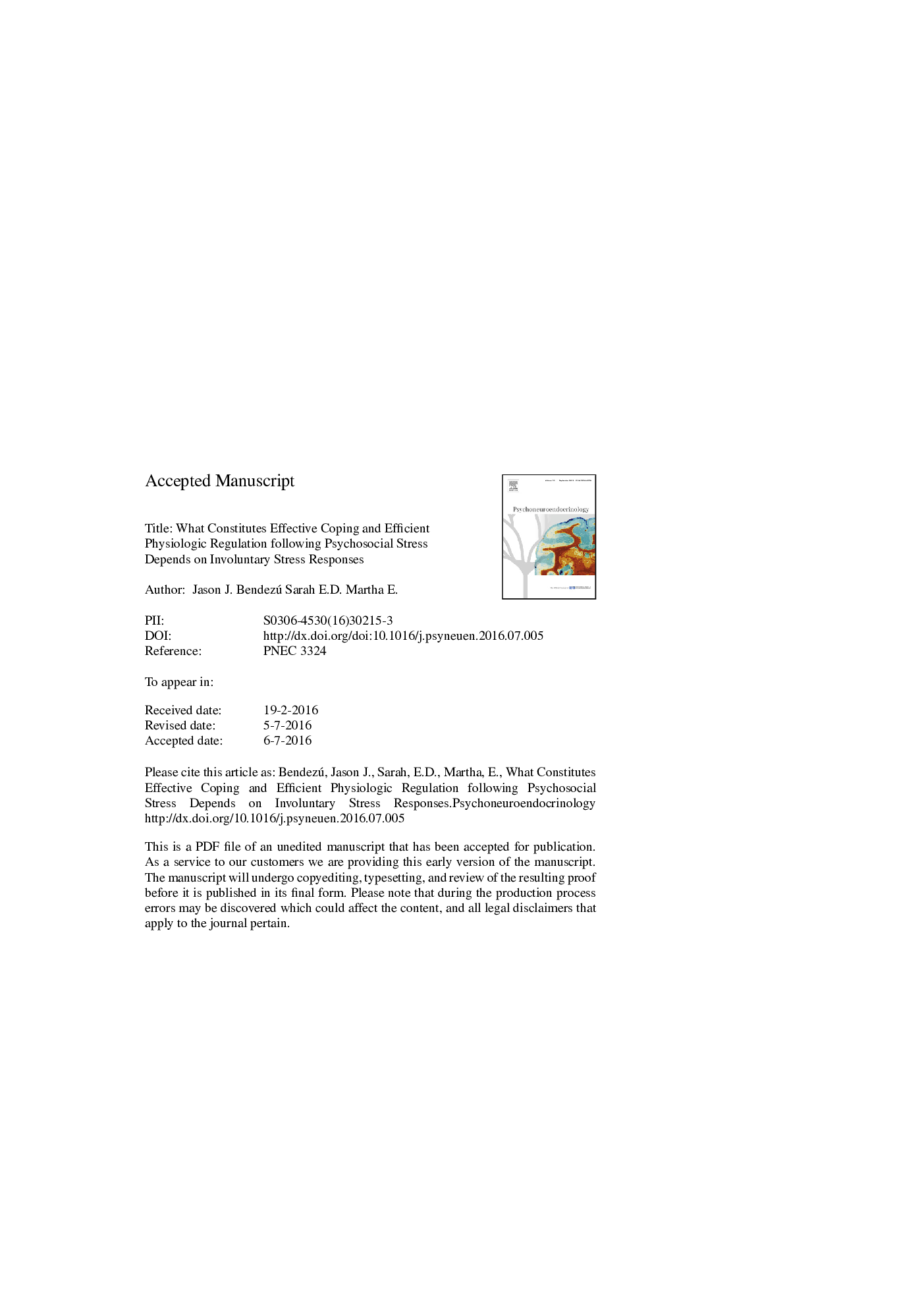| کد مقاله | کد نشریه | سال انتشار | مقاله انگلیسی | نسخه تمام متن |
|---|---|---|---|---|
| 6817924 | 547064 | 2016 | 32 صفحه PDF | دانلود رایگان |
عنوان انگلیسی مقاله ISI
What constitutes effective coping and efficient physiologic regulation following psychosocial stress depends on involuntary stress responses
ترجمه فارسی عنوان
چه چیزی مقابله موثر و مقررات فیزیولوژیک کارآمد پس از استرس روحی-اجتماعی بستگی دارد به پاسخهای استرس غیر دائمی
دانلود مقاله + سفارش ترجمه
دانلود مقاله ISI انگلیسی
رایگان برای ایرانیان
کلمات کلیدی
مقابله، پیادهروی کورتیزول، آلفا آمیلاز، فشار،
موضوعات مرتبط
علوم زیستی و بیوفناوری
بیوشیمی، ژنتیک و زیست شناسی مولکولی
علوم غدد
چکیده انگلیسی
This study utilized a random-assignment experimental design to examine the interactive contributions of youth-reported trait involuntary stress responses (ISRs) and effortful coping on physiologic reactivity and recovery patterns in preadolescent boys and girls. Fourth- and fifth-grade child-parent dyads (NÂ =Â 126) participated in this study. Children were exposed to the Trier Social Stress Test (TSST-C) and then to one of two randomly-assigned experimental coping conditions: behavioral distraction and cognitive avoidance. Children's ISRs were examined as predictors of salivary cortisol and alpha-amylase (sAA) reactivity as well as moderators of the effect of coping condition on cortisol and sAA recovery trajectories. Multi-level modeling analyses did not link ISRs to physiologic reactivity patterning. ISRs and coping condition interacted to predict differential physiologic recovery trajectories. In the distraction condition, children reporting high ISR levels displayed less efficient cortisol and sAA recovery than children reporting low ISR levels. Surprisingly, the opposite was found for children reporting high ISR levels in the avoidance condition. These children displayed more efficient physiologic recovery relative to their high ISR level peers in the distraction condition. Findings suggest that the efficiency of preadolescents' physiologic recovery following stress may depend on regulatory fit between children's ISR levels and cues from their coping environment.
ناشر
Database: Elsevier - ScienceDirect (ساینس دایرکت)
Journal: Psychoneuroendocrinology - Volume 73, November 2016, Pages 42-50
Journal: Psychoneuroendocrinology - Volume 73, November 2016, Pages 42-50
نویسندگان
Jason J. Bendezú, Sarah E. D. Perzow, Martha E. Wadsworth,
